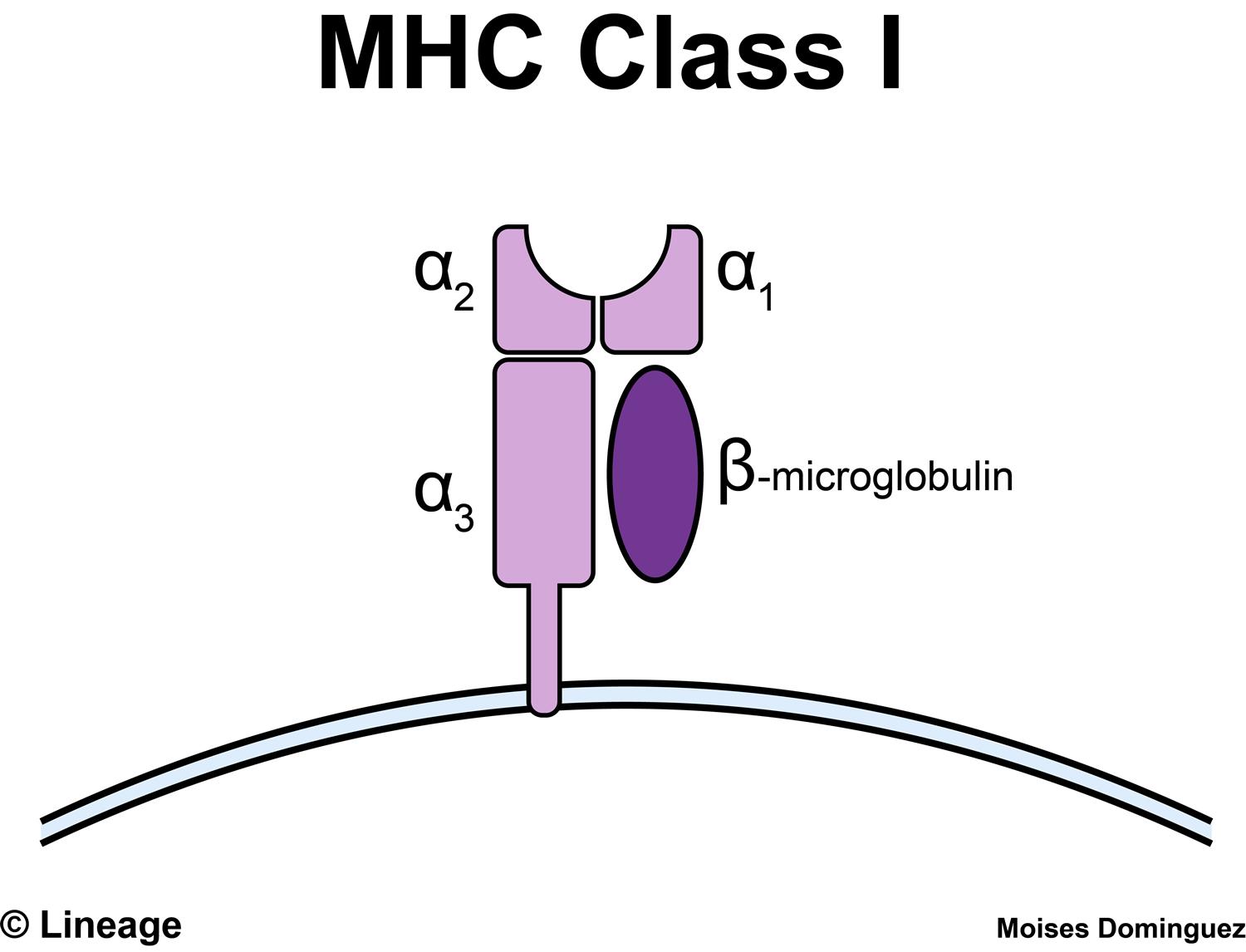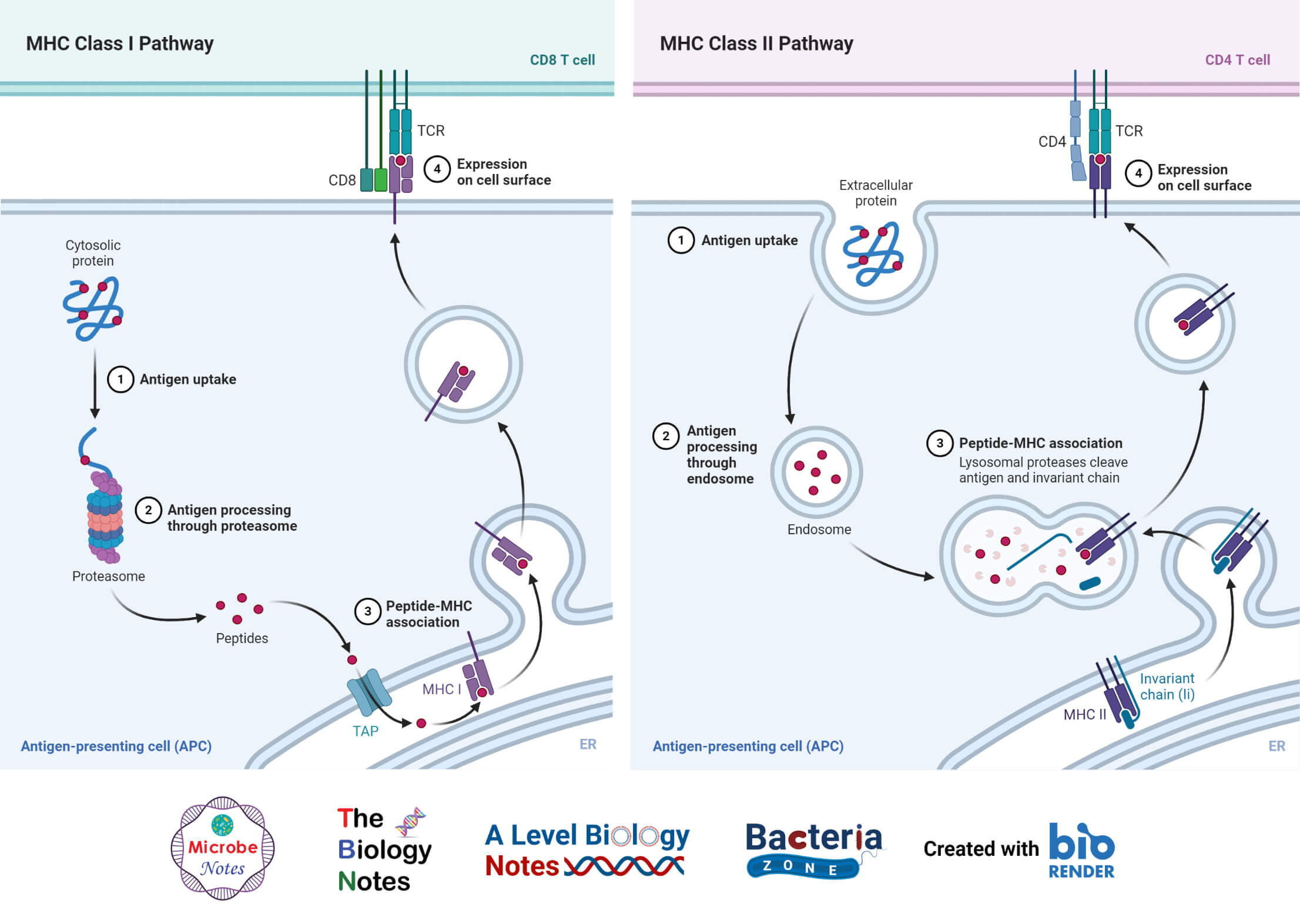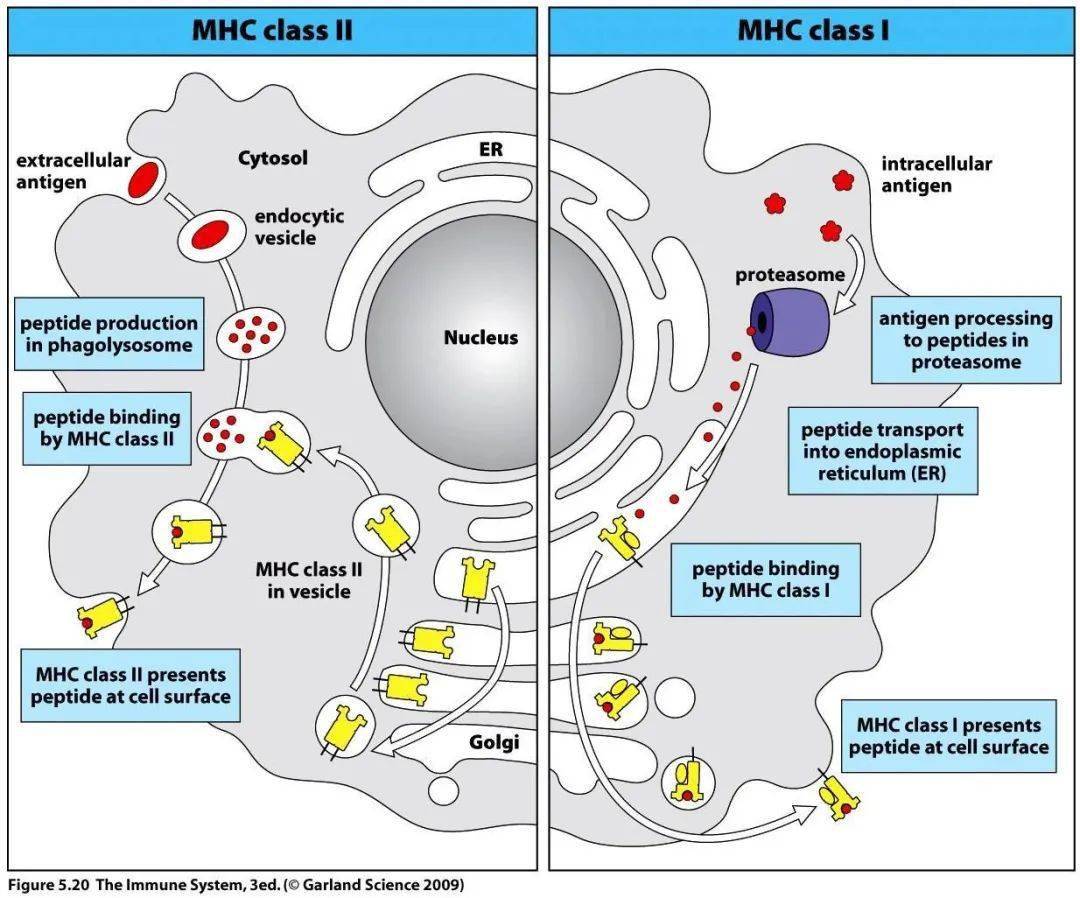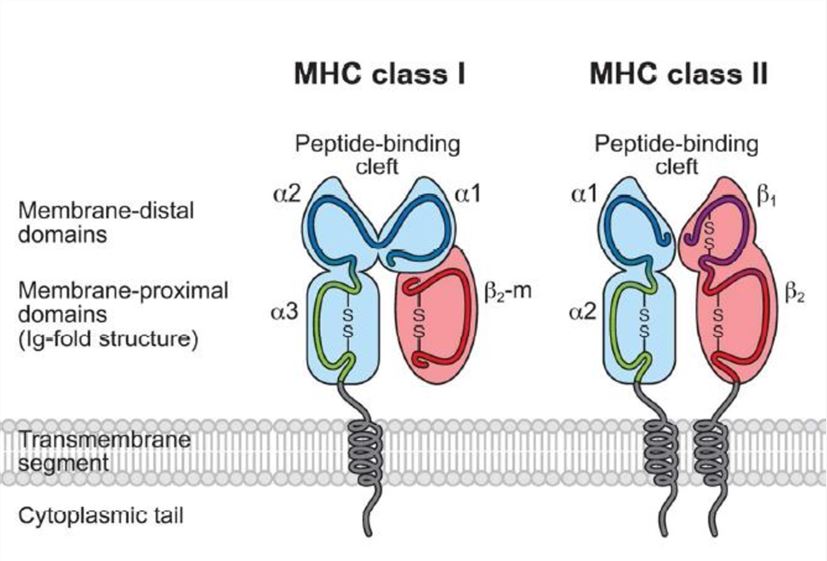
Difference between MHC Class I and MHC Class II YouTube
Introduction. Major histocompatibility complex (MHC) molecules present peptide fragments of intracellularly digested protein antigens to T cells (1, 2).MHC class I (MHC-I) is expressed by most nucleated cell types and important for presentation of peptides from intracellular antigens to CD8 + cytotoxic T cells, which can kill the presenting cell in case of infection or cancerous mutations.

PPT Chapter 13 The Immune Response PowerPoint Presentation, free download ID3070236
The conformational plasticity of MHC proteins is known to be of relevance for antigen presentation [7 •], especially for peptide exchange during MHC-complex maturation, where rare conformational states are recognized by catalysts (tapasin and TAPBPR for MHC class I: Figure 1 a and b, and HLA-DM for class II: Figure 2 a and b).These proteins define a subclass of exchange factors that are.

mhc class 1 vs 2 Google Search Physiology, Tissue biology, Human anatomy and physiology
Instead of taking advantage of SPP and TRC8, US11 directs MHC I to ERAD degradation through a Derlin-1-dependent pathway. 59,60 Deploying its ectodomain, US11 interacts with MHC I molecules 61,62.

Difference between MHC Class I and MHC Class II YouTube
Il complesso maggiore di istocompatibilità o, in inglese, major histocompatibility complex ( MHC) è un gruppo di geni polimorfici costituito da 30 unità (tuttora individuate), localizzato sul braccio corto del cromosoma 6 (nel topo sul cromosoma 17). Le più conosciute codificano per proteine espresse sulla membrana cellulare le quali hanno.

Difference Between Mhc Class 1 And 2 appetitewoman
Main Difference - MHC Class 1 vs 2. Major Histocompatibility Complex (MHC) is a tightly-linked, gene clusters found in mammals.MHC in humans is known as HLA (human leukocyte antigen) complex and in mice, MHC is known as H-2 complex. HLA complex is the most polymorphic region of the human genome.MHC genes are expressed to produce surface antigens on the cell membrane.

Structure and Function of MHC Immunology Medbullets Step 1
MHC class I or major histocompatibility complex type 1 is a diverse set of cell surface receptors expressed on all nucleated cells in the body, as well as platelets. In humans, MHC also has the name HLA (human leukocyte antigen), and these are three subtypes, HLA-A, HLA-B, and HLA-C. These molecules play a vital role in the immune system recognizing self from non-self, presenting foreign.

mhc1 vs mhc 2 antigen Google Search USMLE and COMLEX Medical laboratory science, Medical
Major histocompatibility complex (MHC) genes code for key proteins of the adaptive immune system, which present antigens from intra-cellular (MHC class I) and extra-cellular (MHC class II) pathogens.

MHC Class I vs. MHC Class II Protein • Microbe Online
Introduction. Major histocompatibility complex (MHC) molecules present peptide fragments of intracellularly digested protein antigens to T cells (1, 2).MHC class I (MHC-I) is expressed by most nucleated cell types and important for presentation of peptides from intracellular antigens to CD8 + cytotoxic T cells, which can kill the presenting cell in case of infection or cancerous mutations.

Structure and Difference Between MHC Class 1 and MHC Class 2 molecules Biotechfront
There is no crystal structure of the MHC class I/tapasin complex, but several structural models and mutational studies suggested that tapasin binds two regions in the HC of MHC class I, a loop in the α 3 domain (residues 222-229), and a region of the α 2 domain (residues 128-137) adjacent to the F-pocket (Figure (Figure1B) 1 B) (18, 21.
Difference Between Mhc Class 1 And 2 appetitewoman
Read on to explore the differences between these two classes: Difference Between MHC Class I and MHC Class II Proteins. MHC Class I. MHC Class II. Distribution. Present on almost all cells which have a nucleus. Has a comparatively limited distribution. Typically found in dendritic cells, macrophages, and B-cells.

What is MHC and why does it matter? ImmunoBites
MHC class I molecules consist of one membrane-spanning α chain produced by MHC genes, and one β chain produced by the β2-microglobulin gene. MHC class II molecules consist of two membrane-spanning chains, α and β both produced by MHC genes. 11. Building amino acids: Possess 8-10 amino acids. Possess 13-18 amino acids. 12. Peptide binding.

MHC genes demystified Pathology Student
MHC class II molecules on the surface of antigen-presenting cells display a range of peptides for recognition by the T-cell receptors of CD4 + T helper cells. Therefore, MHC class II molecules are.

MHC Molecules, Antigen Processing and Presentation
MHC class I molecules as ligands for T cell receptors. Through cooperative binding via the CD8 co-receptor, T cell receptors (TCR) of CD8 + T cells are able to engage MHC class I molecules on opposing cells in a manner that is exquisitely specific for the MHC class I-associated peptide (reviewed in []).The extracellular regions of the TCR comprise α and β chains that contain immunoglobulin.

JCI Immune MAL2practice breast cancer immunoevasion via MHC class I degradation
The MHC class II pathway described below is mainly based on studies of HLA-DR and mouse MHC class II (I-A and I-E); the pathway may differ in details for other MHC class II molecules.

人人学懂免疫学:第十六期 免疫学专题_分子
Figure 12.3A. 1 12.3 A. 1: Epitope-Specific Receptors on the Surface of B- and T-Lymphocytes. B-lymphocytes have B-cell receptors that recognize epitopes directly on antigens. T-lymphocytes have TCR molecules that recognize epitopes only after they have been placed on cells of the body by way of MHC molecules.

The major complex (MHC) Types, their structure and functions Online
63. MHC class I molecules are one of two primary classes of major histocompatibility complex (MHC) molecules (the other being MHC class II) and are found on the cell surface of all nucleated cells in the bodies of vertebrates. [1] [2] They also occur on platelets, but not on red blood cells. Their function is to display peptide fragments of.
- Da Porto Ceresio A Lugano In Battello
- I Bastardi Di Pizzofalcone Marinella
- Crisi Canale Di Suez Oggi
- Tasso Pronti Contro Termine A 3 Mesi
- Il Cuore è Uno Zingaro Nicola Di Bari
- 50 Cent Cervantes 2000 Valore
- Cose Da Vedere A Glasgow
- Film E Programmi Tv Di D B Woodside
- Val Di Fiemme Sci Fondo
- Il Tuo Natale O Il Mio